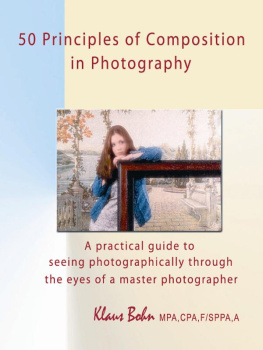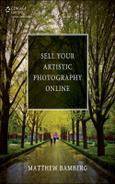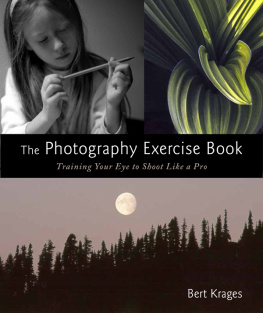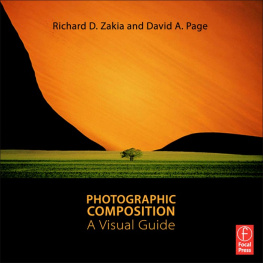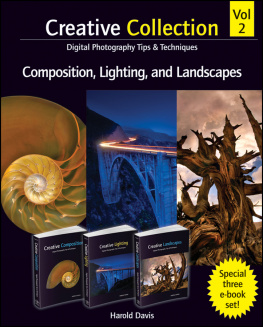50 Principles of Composition
in Photography
A practical guide to
seeing photographically through
the eyes of a master photographer
by Klaus Bohn, MPA, CPA, F/SPPA, A
www.photographicartvictoria.com
CCB Publishing
British Columbia, Canada
50 Principles of Composition in Photography: A practical guide to seeing photographically through the eyes of a master photographer
Copyright 2006 by Klaus Bohn, MPA, CPA, F/SPPA, A
ISBN-10 0-9739050-8-5
ISBN-13 978-0-9739050-8-3
First Edition
Library and Archives Canada Cataloguing in Publication
Bohn, Klaus, 1945
50 principles of composition in photography [electronic resource]: a practical guide to seeing photographically through the eyes of a master photographer / by Klaus Bohn.
Includes index.
Also available in paperback format.
ISBN 0-9739050-8-5
1. Composition (Photography). I. Title. II. Title: Fifty principles of composition in photography.
TR146.B65 2006 771 C2006-903068-5
Extreme care has been taken to ensure that all information presented in this book is accurate and up to date at the time of publishing. Neither the author nor the publisher can be held responsible for any errors or omissions. Additionally, neither is any liability assumed for damages resulting from the use of the information contained herein.
All rights reserved. No part of this publication may be reproduced, stored in a retrieval system or transmitted in any form or by any means, electronic, mechanical, photocopying, recording or otherwise without the express written permission of the publisher. Printed in the United States of America and the United Kingdom.
Photo credits: All photos contained herein are copyright Klaus Bohn with the following exceptions:
1) Mitch Hippsley
2) David Bohn
3) Paul Rabinovitch
Publisher: CCB Publishing
British Columbia, Canada
e-mail: info@ccbpublishing.com
I dedicate this book to my three children who, even at an early age, have spurred me on to live a life full of adventure with them. Im glad that my adventure, my pursuit for daily living is so much more than just making a living! That is borne out even in their lives as they have grown into adulthood.

To you Michael, my first born, I dedicate this book because you were there when I needed you the most. Tests and trials are inevitable but as we face each challenge, what enables us to weather the storm is those who are there for us and are willing to go the extra mile. They give up their own comfort for another and stick with their commitment to help another. Words cannot express my gratitude to you my son. You helped me start over and stayed 5 years with me.

To you David who bares my name David Klaus, or DK for short, you were so adventuresome when after high school you left home and pioneered for a place in Victoria, British Columbia. In time we followed and moved too. I could tell at an early age that you had an eye and ear for art and music in just how you dedicated your time and efforts and from your many accomplishments. Without your help and sheer determination to put it all together this book would never have happened. During the past five years we have learned from each other, your commercial approach and my portrait method combined to help us find our individual style. For this I thank you from the bottom of my heart.
To Tammy my only daughter, who echoes my personality in so many ways, especially in travel. As you know I put a lot of effort into travelling to many far away places and now you too have shone so much brightness in your many travels to so many far away places. I highly regard your invitation to travel with you to the orient and other places that can be shared so personally with family as I have valued in the past. When you were small I very often used you as a model. You will always remember one special project which was an adventure in itself. I had one year to photograph you each month with a different animal: a pig, a lamb, a cat, a horse, a cow, a dog and so on. Thank you for being you.

Table of Contents
Picture yourself alone in a car driving down the highway. To the right is a large body of water, to the left are hills and telephone poles, in front is a car coming towards you and in back is nothing.
You have been over the same stretch of road on numerous occasions, but this time something is different. The trip seems more relaxing and far more interesting. Lets take a second look!
It is the first day of summer. The radio is resounding a soothing tune. The sun is beating its hot rays down onto the lake. As they hit the water, the rays seem to bounce as though dancing from wave to wave, twinkling as they step. Ducks sit calmly while the waves carry them ever so gently through the flowing water.
The car ahead is travelling in a mirage as the heat rises from the pavement. The highway over which you have just journeyed awaits the next vehicle. What will the travellers inside see out their windows?
No wonder the trip seems so much more interesting! My eyes have been opened to a new dimension, one which was always there, but which I was taking for granted and not seeing. We get so involved in our day to day living and the hustle and bustle that goes with it, that we are missing much of the beauty around us.
Klaus book, 50 Principles of Composition in Photography, is one that I feel will help you, whether you are amateur or professional photographers. Each of us has something to learn about viewing our surroundings and how best to capture the feeling and emotion that goes along with the view. The book is basic enough for all to read and understand. Even if just one principle is gained by studying the pages, you have been enriched.
Take a moment now to look around you. What do you see? There is likely a lot more there than you realize. There are lots of photographs waiting to be taken. There are lots of photographs waiting to be taken right where you are this moment.
Open your eyes!
Read on!
Judith Barber
Professor of Business Studies
According to Websters definition, composition is a putting together of awhole, the make-up of anything and/or a mixture of substance.
There are no rules to composition , only guides and extremely flexible principles that may help us to see more sensitively instead of in a hit or miss manner. The more aware we are manner. The more aware we are of effective composition, the more satisfaction we may derive from photography. Learning to give form and balance by putting together the elements harmoniously can help us see a subject in the strongest way.
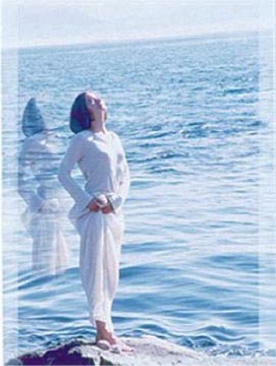
Learning the ABCs of photography begins with the technical education of our equipment and light. Composition is an elementary step. Most beginners are in search of a formula or recipe to which they can rigidly adhere. This, of course, is an illusion! Any recipe for good composition is similar to that of a chef who begins to work instinctively -- a dash of this and a pinch of that. We must remember that composition is the selection and arrangement of an object within the picture format by using space most effectively.
Next page
